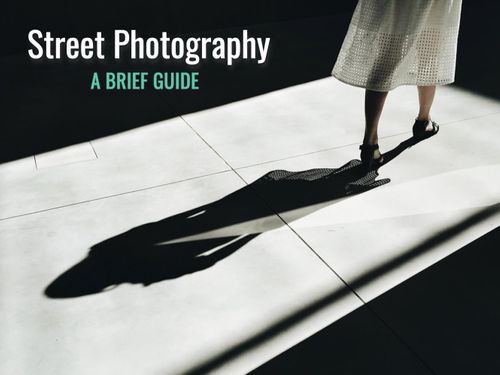The art of street photography in a nutshell
Oct 06, 2021 · 2 mins read
0
Share
Street photography never stops evolving, absorbing something new from every generation that discovers it. But the spirit of the form is a constant: the subtle serendipities that bring an image alive. That comes down to timing: get out there, be present, and be patient.
Save
Share
Nearly everything you shoot will not be worth sharing. What sets the best apart is quality control. Bruce Gilden, for example, lets some time pass looks before looking at the thumbnails of an edit. A diamond shot (about 0.1% of all images) will shine even at low resolution.
Save
Share
Take your camera everywhere. When you only look through your lens in an unfamiliar place, it’s harder to discover genuine moments of magic (and avoid clichés). Train your eye to capture something truly unique by constantly working with scenes that might seem ordinary.
Save
Share
Test your boundaries. Get close to people, even if it makes you uncomfortable. If you always shoot during the day, go out in the dead of night. Set yourself challenging assignments that seem bound to fail. They will. This is how you become better.
Save
Share
The frame is sacred. What’s at the centre is no less important than what’s on the periphery. Alex Webb is a master of layering detail this way. Eric Kim, meanwhile, takes an “outside in” approach by finding the right background, then waiting for something to enter the foreground.
Save
Share
Do more than just show. Your work should communicate something, not just be a facsimile. Subvert everyday moments by playing with light (like Trent Parke), zooming in on details that are just a little bit off (like Jesse Marlow), or remixing reality (like Cristina de Middel).
Save
Share
Keep your eyes on the prize. Your job is to see what others don’t, which means staying observant. Don’t try to shoot without looking through the viewfinder just to be covert. It relies even more on luck. If you’re worried about appearing invasive, you can always ask permission.
Save
Share
Your gear should feel like an extension of you. It should not slow you down. Some photographers set their camera at the depth of focus they’re most likely to use (rather than gamble on auto-focus). The better prepared you are, the luckier you’ll be.
Save
Share
Build a series. We’ve touched on the importance of telling, rather than just showing, and your body of work plays an important role in that. Consider what connects your images. How would you group them? Trying developing multiple projects at a time, long term, for best results.
Save
Share
Blaze your own trail. We all have influences – and they will rub off on us in ways we’re not always conscious of. But to produce worthwhile work, you’ve got to set your own rules and take unexpected turns along the way. Only then will you reach places that your heroes never went.
Save
Share
0
